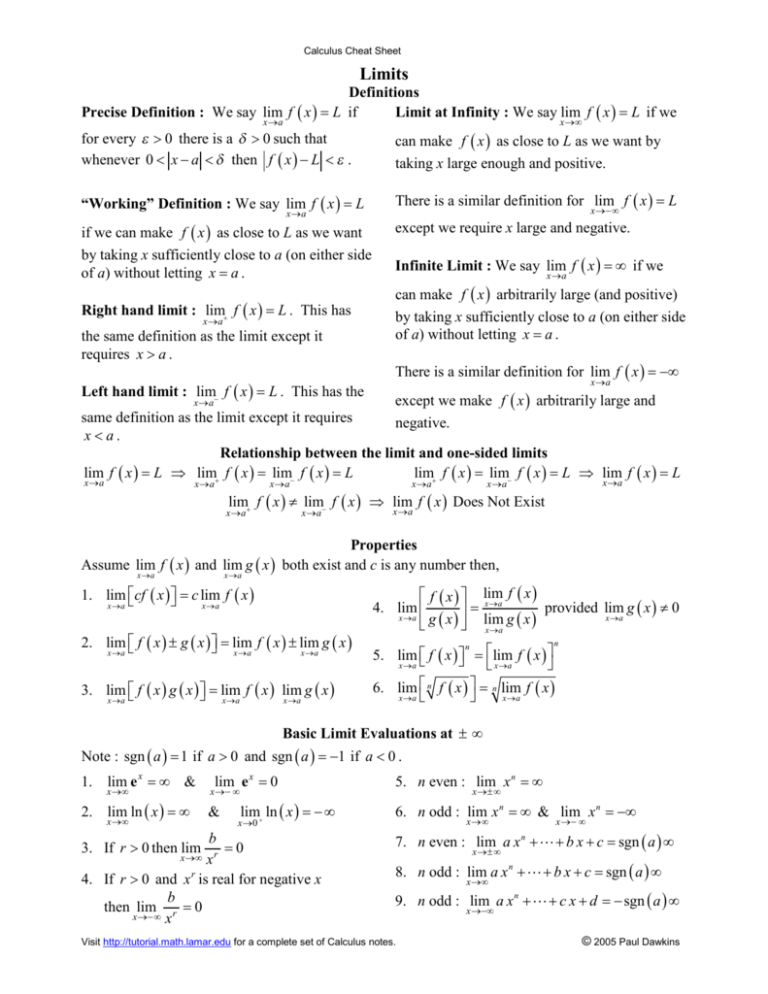
Are there any other ways of describing a limit? Should the concept of a limit be applicable to all functions, or is it really only useful for certain situations?Ģ. Is this just for practice, or am I missing something?ġ.

I can see the need for a limit on things like:īecause you need to know what the value "approaches" not what it actually equals, because at 0 it basically doesn't exist. "The value that f(x) approaches as x approaches some number." Most of the time I get the same vague description: I searched all over your site and couldn't find anything about understanding limits.īasically I'm trying to find any extra help I can on understanding the concept of a limit. The following question arrived in 2001: Understanding the Need for Limits What good are limits? Why did they have to be invented? Are they as simple as they seem? Why is an epsilon-delta proof necessary? Are limits useless? But too often the concept is not sufficiently motivated.

In the next section we give a name to this nice behavior we label such functions as continuous. One of the main results of this section states that many functions that we use regularly behave in a very nice, predictable way.
#Importance of limits in calculus series
1.3: Finding Limits Analytically Recognizing that ϵ-δ proofs are cumbersome, this section gives a series of theorems which allow us to find limits much more quickly and intuitively.Many refer to this as "the epsilon-delta,'' definition, referring to the letters ϵ and δ of the Greek alphabet. 1.2: Epsilon-Delta Definition of a Limit This section introduces the formal definition of a limit.Once the limit is understood, then the problems of area and rates of change can be approached. After a formal definition of the limit, properties are established that make "finding limits'' tractable. This chapter begins our study of the limit by approximating its value graphically and numerically. It is a tool to describe a particular behavior of a function. 1.1: An Introduction to Limits The foundation of "the calculus'' is the limit.

Today, we generally shorten this to discuss "calculus.'' The foundation of "the calculus'' is the limit. However, as the power and importance of their discovery took hold, it became known to many as "the'' calculus. Their system of reasoning was "a'' calculus. Two mathematicians, Sir Isaac Newton and Gottfried Leibniz, are credited with independently formulating a system of computing that solved the above problems and showed how they were connected. It turns out that these two concepts were related. When an object moves at a constant rate of change, then "distance = rate \(\times \) time.'' But what if the rate is not constant - can distance still be computed? Or, if distance is known, can we discover the rate of change? However, the areas of arbitrary shapes could not be computed, even if the boundary of the shape could be described exactly. Area seems innocuous enough areas of circles, rectangles, parallelograms, etc., are standard topics of study for students today just as they were then.(This is true even today.) In particular, two important concepts eluded mastery by the great thinkers of that time: area and rates of change. Despite the wonderful advances in mathematics that had taken place into the first half of the 17 th century, mathematicians and scientists were keenly aware of what they could not do. Proving a theorem in geometry employs yet another calculus. When one finds the area of a polygonal shape by breaking it up into a set of triangles, one is using another calculus. \)Ĭalculus means "a method of calculation or reasoning.'' When one computes the sales tax on a purchase, one employs a simple calculus.


 0 kommentar(er)
0 kommentar(er)
